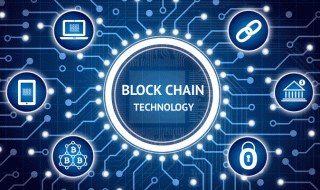In the world of decentralized finance (DeFi), AAVE’s Flash Loan Innovation has emerged as a groundbreaking concept. This article explores the significance and mechanics of AAVE’s Flash Loans, challenges and risks associated with AAVE’s flash loans. As we delve into AAVE’s flash loan, get insight about how you can regain financial freedom with Bitcoin Gold and get better at cryptocurrencies.
Key Features and Mechanics of AAVE’s Flash Loans
One of the fundamental aspects of AAVE’s Flash Loans is their unique set of features and mechanics that make them a powerful tool within the decentralized finance (DeFi) ecosystem. These features are designed to ensure secure and efficient borrowing and lending experiences for users.
At the core of AAVE’s Flash Loans is a robust smart contract architecture. These smart contracts are built on blockchain technology, ensuring transparency, immutability, and tamper-proof execution. By leveraging the power of smart contracts, AAVE enables users to access Flash Loans without the need for intermediaries, reducing costs and improving overall efficiency.
Integration is another key feature of AAVE’s Flash Loans. The protocol is designed to seamlessly integrate with other DeFi platforms, allowing users to leverage their liquidity and interact with various protocols within the ecosystem. This interoperability enables innovative use cases and promotes synergy among different DeFi projects.

When it comes to Flash Loans, fees and economic incentives play an essential role. AAVE’s Flash Loans operate on a fee-based model, where borrowers are required to pay a fee for utilizing the loan facility. These fees contribute to the sustainability of the protocol and incentivize lenders to provide liquidity. Additionally, economic incentives such as yield farming and liquidity mining programs further encourage participation in the Flash Loan ecosystem.
To ensure the security of Flash Loans, AAVE has implemented stringent security measures. The smart contracts undergo extensive audits by reputable firms to identify and mitigate any vulnerabilities. This commitment to security provides users with confidence in utilizing Flash Loans and protects them from potential risks.
Challenges and Risks Associated with AAVE’s Flash Loans
While AAVE’s Flash Loans offer numerous benefits and opportunities within the decentralized finance (DeFi) landscape, they also come with their own set of challenges and risks that users should be aware of. Understanding these potential drawbacks is crucial for responsible and informed participation in the Flash Loan ecosystem.
One of the primary concerns associated with Flash Loans is security. Although AAVE has implemented rigorous security measures and undergone comprehensive audits, there is always a risk of vulnerabilities in smart contracts. Malicious actors may exploit these vulnerabilities to carry out attacks, leading to potential financial losses for users. It is essential for users to exercise caution, conduct thorough due diligence, and only interact with reputable platforms and protocols.
Regulatory and compliance considerations are also important when it comes to Flash Loans. The regulatory landscape surrounding DeFi is still evolving, and there may be legal implications or compliance requirements that users need to navigate. Depending on the jurisdiction, there could be restrictions or uncertainties surrounding the use of Flash Loans, especially in terms of potential money laundering or financial regulations. Users should stay informed about the regulatory developments and seek legal advice if necessary.
Another risk associated with Flash Loans is market volatility. Flash Loans operate within a dynamic and rapidly changing market environment. Sudden price fluctuations, liquidity imbalances, or market manipulations can impact the profitability and stability of Flash Loan strategies. Traders and borrowers should carefully consider these market risks and have appropriate risk management strategies in place to mitigate potential losses.
Furthermore, Flash Loans heavily rely on the availability of liquidity. In situations where there is a lack of liquidity in the market or during times of high demand, obtaining Flash Loans may become challenging or expensive. Users should be prepared for potential liquidity constraints and consider alternative borrowing or lending options during such periods.
It is worth noting that the challenges and risks associated with AAVE’s Flash Loans are not unique to this specific innovation but are inherent to the broader DeFi ecosystem. As with any financial activity, there are risks involved, and users should exercise caution, conduct thorough research, and understand the potential downsides before engaging in Flash Loan transactions.
By being aware of the security, regulatory, market volatility, and liquidity risks associated with Flash Loans, users can make informed decisions and take necessary precautions to minimize potential drawbacks. AAVE and the broader DeFi community continue to address these challenges, implement improvements, and develop best practices to enhance the safety and resilience of the Flash Loan ecosystem.
Conclusion
AAVE’s Flash Loan Innovation has revolutionized the DeFi landscape by democratizing liquidity access, empowering developers, and enhancing market efficiency. As the adoption of Flash Loans continues to grow, it is poised to unlock new possibilities and drive the future of decentralized finance.



